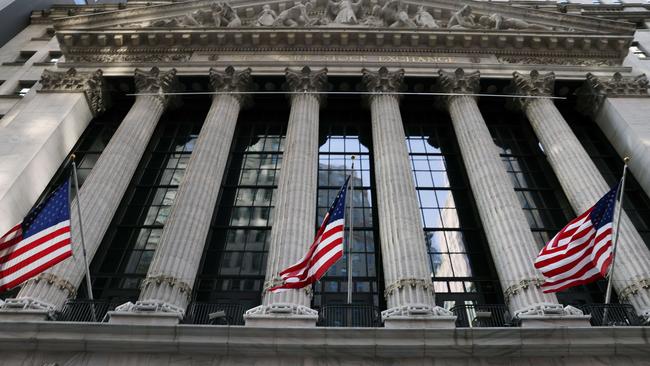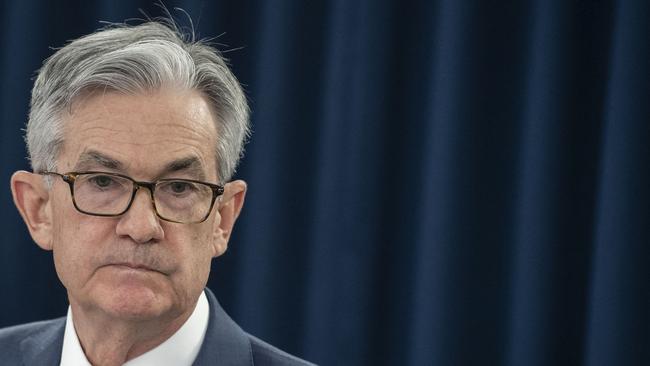In the US Federal Reserve we fear
Will the US central bank be too slow to face up to reality, allowing an even bigger bubble to build and so cause an even bigger bust?

The Reserve Bank’s official interest rate drives our property market while it’s the US Fed’s rate that drives Wall St – and our share market.
Overnight Friday Wall St wobbled – the Dow dropped over 500 points – supposedly on rising fears that the Fed might start to raise its rate. In all of two years time.
In days gone by a 500-point fall was significant; these days with the Dow at 34,000 it was, just, a rounding error. Maybe I should have written that Wall St ‘wibbled’.
As I’ve explained the Fed signalled no such thing. The ‘signal’ was supposedly in the Fed’s ‘forecasts’ which showed a rise in its rate from its current all-but zero 0.1 per cent (the same as our RBA’s rate) to a still all-but zero 0.6 per cent in 2023.
But that wasn’t really ‘the Fed’s forecast’ – or even that of its ‘bend-over backwards to keep the greediest guys in the Wall St room happy’ chairman Jerome Powell.
It was the (median) average of the projections of about two-dozen members of the Fed and the Federal Reserve System bank presidents.
The actual policy statement put out by the Fed and unanimously endorsed by every (voting) member was as ‘keep the monetary hose on full throttle’ as ever.
Indeed, it was still promising to do more if needed – and that points to the real challenge for investors.
Simply, will the Fed be too slow to hike, allowing an even bigger bubble to build and so cause an even bigger bust?
Or will it, worse, back off when investors throw a temper tantrum – which these days would need to be more like a 5000-point drop rather than a 500-point one?
So for local investors the worry is not whether the Fed will act and trigger a market plunge, but more than it will almost certainly not act and the bubble will just grow larger.
Now, while the impact of our RBA’s similar zero-rate plus money printing policy mix has played out most directly in driving the spectacular rise in property prices, it also plays into the share market.

The four big banks remain the foundation of our market – they occupy four of the top six places, the other two are BHP and CSL (the maker of a certain vaccine) – and their spectacular share price recoveries from the post-virus plunge has been all about the RBA and the property market.
Indeed, the RBA has been guaranteeing they get to raise money at the all-but zero 0.1 per cent, on the one hand – money they can lend out at 2 per cent, and higher, on the other.
Further, the RBA is guaranteeing that juicy margin for the next three years; it’s lent the banks around $200bn at the 0.1 per cent, with most of that locked in until 2024.
In a very real sense, if you are upset at getting just 0.1 per cent on your bank deposit, don’t blame the bank, blame the RBA. Why should the bank pay you more than it pays the RBA?
I might add that, despite what people might have thought over the years, the RBA has never done this before – lend money directly to the banks at its official rate, precisely for them to lend it out, at a profit, to home-buyers.
Importantly, a home loan is the safest loan a bank can make – as any small business owner knows, when the bank demands a mortgage over property to finance even, especially, a business loan.
Yes, a property loan to an investor might be somewhat riskier than a loan to an owner-occupier, but not much riskier – especially if the bank sets a conservative LVR (loan to value ratio) of, say 60 per cent.
The remaining four stocks in the top ten are two retailers (Wesfarmers and Woolworths), another miner Fortescue and the ‘fifth bank’ Macquarie – all, most directly sensitive to the local RBA’s rate which ain’t going anywhere anytime soon, or China.
In sharp contrast to Wall St, there’s only one tech stock in the top 20 – Afterpay. No Amazons, Apples, Googles or Microsofts.
So would that ‘save us’ from a Wall St plunge? No way Even if our RBA didn’t blink, our market would fall in lockstep with Wall St.
But the fall might – probably would – be moderated; especially as our dollar would likely drop and that would make any market fall in Australia actually be a bigger fall in US dollar terms, rendering our stocks and our overall market even cheaper in non-$A terms.
In sum, I don’t see action by either the Fed or the RBA triggering a share market fall; the bigger risk comes from their inaction.
I suggest they are (both) already behind the curve. The Fed’s far further behind than the RBA; it will also be slower to catch up, with the curve and with reality.



